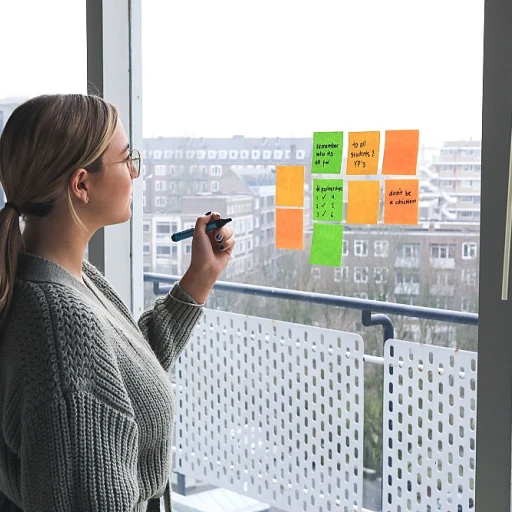Understanding Employee Experience Software
Grasping the Basics: Employee Experience Software
Employee experience software serves as the backbone for modern companies aiming to boost employee engagement, satisfaction, and performance. This technology is not just another tool in the toolkit, but a vital part of creating a thriving workplace culture. The real-time feedback, performance management, and recognition rewards offered through these platforms aim to empower every employee to give their best every day. Think of employee experience software as a place where tech meets human touch. It offers management and HR teams a chance to listen to employee feedback without the noise, providing data-driven insights that help shape a positive company culture. One standout element is the ability to conduct surveys, allowing companies to capture genuine employee sentiments. These surveys help businesses pinpoint issues early and take action before minor concerns balloon into larger problems. Imagine knowing exactly what your employees think about changes in policies or work environment shifts, and having the analytics to back it up. Experience platforms have evolved to include more than just surveys. They can integrate peer recognition programs, making it easier for employees to give and receive recognition. This plays a crucial role in maintaining employee satisfaction, as everyone loves a little pat on the back now and then. By encouraging regular feedback and recognition, companies can foster an atmosphere brimming with positivity and productivity. With so many features combined, these platforms offer comprehensive solutions that simplify the everyday management tasks. From managing holiday requests to performance reviews, it reduces the time spent on administrative duties and allows employees to focus more on their work. While we've only scratched the surface of employee experience software, it's clear how these tools can dramatically shape the way employees interact with their workplace. To read more about enhancing the digital experience for employees, check out this insightful blog post. Here lies the opportunity to not only understand, but embrace, an engaging workplace for everyone.Key Features to Look for in Employee Experience Software
Must-Have Features That Drive Engagement
When looking into employee experience software, it's important to keep an eye out for features that genuinely boost engagement and feedback opportunities. Consider these elements that have shown to make a difference in the experience for employees:- Real-Time Feedback: Employees today want timely responses to their work. Real-time feedback tools enable quick communication, making employees feel heard and valued.
- Recognition Rewards: Platforms that include recognition rewards motivate workers by acknowledging their achievements. Employees feel more satisfied when their efforts are recognized by peers and management alike.
- Comprehensive Surveys: Surveys help gather valuable employee feedback. Look for software that allows customizable surveys so management can obtain insights tailored to their workers' specific needs and concerns.
- Performance Management: Efficient performance management tools support clarity in evaluations. This fosters transparency and drives better performance across teams.
- Data-Driven Analytics: Analytics platforms provide insights into employee behavior and trends, assisting organizations in making informed decisions based on data rather than guesswork.
The Impact of Employee Experience Software on Company Culture
Transforming Company Culture: A Ripple Effect
When it comes to employee experience software, the impact on company culture is a game-changer. Such software serves as a bridge where employee feedback flows seamlessly to all levels of management, making the culture more conducive to growth and engagement. By ensuring employees are heard through surveys and real-time analytics, companies can mold a positive atmosphere that boosts satisfaction and productivity. Consider how recognition rewards play a pivotal role in fortifying this atmosphere. With features that allow peer recognition and highlighting achievements, employees feel valued and motivated. This not only nurtures a sense of belonging but also helps cement camaraderie across teams. A successful implementation of experience platforms can transform how a company views data-driven decisions. By leveraging insights garnered from these resources, companies have the power to shift their management strategies to be more aligned with employee needs. Improved alignment can translate into better performance management, resulting in enhanced employee satisfaction and a thriving culture. The journey isn't always smooth, and challenges pop up, as discussed in other parts of our article. However, by embracing the tools and strategies available, companies can certainly make enormous strides forward. For those looking to stay ahead in refining their workplace environment, using an employee experience platform is a step in the right direction. By recognizing and addressing the cultural nuances this software brings to light, companies can truly foster an environment where everyone excels. For more on the transformative powers of these tools, read about enhancing the employee experience through effective tools.Case Studies: Success Stories of Employee Experience Software
Real Stories of Enhanced Employee Engagement
Imagine walking into an office where smiles greet you, productivity is buzzing, and employees seem genuinely happy to be there. You might wonder, what is their secret sauce? Many companies have found that employee experience software is an essential ingredient for transforming their workplace culture. Let's walk through some real stories of how companies have elevated their work environment and employee satisfaction.Improved Communication and Feedback Loops
Employee experience platforms provide channels for real-time feedback. Take Company A, a mid-sized tech firm that harnessed a feedback platform to improve communication across teams. Before the software’s introduction, employees felt their voices weren't heard, causing a dip in morale. With the platform, they could give feedback instantly, and, most importantly, they saw that feedback being acted upon. This real-time response improved employee engagement and stamped out the feeling of being unheard.Recognition and Peer Cheers Boost Morale
Another inspiring story is that of Company B, which implemented an employee recognition feature in their management software. This tool was a game changer, enabling employees to recognize their peers for their hard work and contributions. This sense of appreciation and recognition created a ripple effect, significantly boosting employee engagement, satisfaction, and overall company spirit. By weaving recognition into daily activities, employees at Company B felt valued, which was mirrored in their performance and commitment to the firm.Data-Driven Insights Shift Company Culture
Company C, a financial services provider, was grappling with high employee turnover. They invested in experience management software that provided data-driven insights into employee satisfaction and engagement. By analyzing the data, management identified areas needing improvement and implemented changes that resonated with employees’ feedback. This transparent approach not only reduced turnover but also strengthened the company's culture.Increased Productivity and Time Management Improvements
Lastly, Company D utilized performance management tools within their software to streamline workflows and improve time management. Employees reported spending less time on mundane tasks, freeing them up to focus on more strategic initiatives. This shift not only enhanced employee satisfaction but also gave the company a competitive edge in meeting their business goals. Each of these stories highlights the potential of employee experience software in transforming company culture. From opening communication channels to recognizing remarkable work, it’s clear that these platforms do more than collect data; they redefine work experiences positively.Challenges in Implementing Employee Experience Software
Overcoming Hurdles in Employee Experience Software Implementation
Introducing any new management software can feel like an uphill battle, and employee experience platforms are no exception. Getting everyone on board and ensuring seamless integration requires time and careful consideration. First, employees might resist change. They've settled into familiar routines and might see new features as disruptions. Communicating the benefits and actively engaging employees through genuine feedback surveys can help. After all, real-time insights and analytics drive informed decisions, making employees feel their opinions matter. Additionally, some companies face issues with data integration. Not all platforms sync smoothly with existing company systems, posing a challenge in managing employee data effectively. Selecting an experience software that offers compatibility with existing tools can ease this process. Integration also typically demands IT resources. For smaller businesses, this may burden their limited tech teams. Prioritizing a scalable platform that offers robust support reduces strain and ensures successful deployment. Another hurdle is continuous feedback and adjustment. Management often underestimates the amount of time needed to interpret employee feedback and make meaningful changes. Yet, consistent performance management and recognition rewards can drastically improve employee engagement and satisfaction. Lastly, it's crucial to address the company's culture. Without buy-in from all levels of management, efforts can feel fragmented. Promoting a culture of recognition and peer recognition ensures every team member feels valued and heard, fostering a positive work environment. Implementation can be challenging, but by anticipating these potential roadblocks, companies can improve employee experience and ultimately boost engagement. With careful planning and a commitment to employee satisfaction, you'll be better equipped to make your platform a valuable asset for your company.Future Trends in Employee Experience Software
What's Next for Employee Experience Software?
As we look ahead, employee experience software is set to become even more integral to workplace satisfaction. The future promises exciting developments that will change how companies interact with their employees. Let's explore some of these anticipated trends.
Real-Time Feedback Revolution
Real-time feedback is becoming a staple in employee experience platforms. The ability to provide instant feedback helps employees feel heard and valued, leading to improved engagement and satisfaction. This trend is set to grow as more companies recognize the benefits of immediate communication over traditional, delayed methods.
Data-Driven Insights for Better Decision Making
Data analytics will play a bigger role in shaping employee experience strategies. By analyzing employee feedback and performance data, companies can gain valuable insights into what works and what doesn't. This data-driven approach allows for more informed decision-making, helping to improve employee satisfaction and company culture.
Enhanced Employee Recognition and Rewards
Recognition and rewards are key features that will see further innovation. Companies are moving towards personalized recognition systems that celebrate individual achievements in meaningful ways. This not only boosts morale but also fosters a culture of appreciation and support.
Integration with Other Management Tools
Future employee experience software will likely integrate more seamlessly with other management software. This will create a unified platform where employee engagement, performance management, and feedback systems work together harmoniously, saving time and improving efficiency.
Focus on Employee Well-being
Well-being is becoming a priority in the workplace, and employee experience platforms are adapting to meet this need. Features that support mental health, work-life balance, and stress management are being incorporated into these platforms, ensuring a holistic approach to employee satisfaction.
In conclusion, the future of employee experience software is bright, with many promising trends on the horizon. By staying ahead of these trends, companies can create a more engaging and supportive work environment for their employees.






